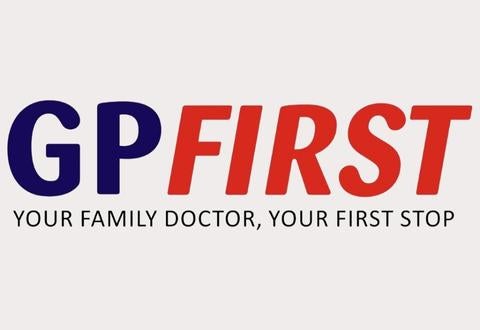Changi General Hospital will NEVER ask you to transfer money over a call. If in doubt, call the 24/7 ScamShield helpline at 1799, or visit the ScamShield website at www.scamshield.gov.sg.
Your ally in better health
Former Director of Allied Health at Changi General Hospital (CGH), Mrs Joanna Wong, who is now retired, shares her memories and experiences across three hospitals in CGH’s history, from the old Changi Hospital and Toa Payoh Hospital (TPH) to CGH.

One of the few staff who has had the opportunity to witness the legacy of trusted care that had its roots in Changi Hospital and TPH, Mrs Joanna Wong had accumulated a wealth of experience as a pharmacist before stepping down as the Director of Allied Health at CGH upon her retirement in September 2022. “All along, I knew I wanted to be in healthcare,” she shares.
Mrs Wong’s journey into healthcare came quite naturally, having grown up in a family where her mother and aunts were nurses. “As children, we fell sick pretty often with fevers, and had many scratches, cuts and boils,” she recalls. “My mum would nurse us, do the dressings and give us medicine.
Taking care of someone, being there for them and helping them to recover was something that I found to be very meaningful.”
While Mrs Wong was not comfortable with handling blood and open wounds, it did not stop her from joining healthcare. She found her lifelong passion in pharmacy.
Memories from Changi
After graduating from school, Mrs Wong joined Alexandra Hospital (AH) as a pharmacist. A hospital arrangement saw her providing coverage at Changi Hospital for its pharmacist on leave in the last two weeks of December each year, and this continued for ten years.

Scenic views from Changi Hospital.
At first, the difference in culture came as a shock to Mrs Wong, having moved from the fast pace of life at AH to the more rustic and idyllic environment at Changi Hospital. Serving a smaller population in the east of Singapore at that time, there were fewer patients.
“The old pharmacy at Changi Hospital was the size of half a classroom and had no windows. It had one door which had a little hatch for the pharmacists to dispense medicine to the ward staff. The walls in the pharmacy were fully lined with medications and it was difficult to locate them at times. It felt confining,” Mrs Wong recounts. “It was also not easy to reduce the smell of the medication and disinfectants at that time as they linger and stay on the clothes. I made a trip to a hairdresser after work one evening and she told me to my face that I was a little smelly. I was quite hurt then.”


Patients collect their prescribed medicine from pharmacists at the TPH pharmacy.
The dispensing of medication in those days was also very different from the processes in practice today. Medicines then were transported from the pharmacy to the wards using rattan baskets. Tablets came in tins of 1,000, unlike the pre-packed blister packs today. When dispensing medicine to patients, pharmacists had to manually count the pills and put them into a paper envelope. Patient information was physically recorded on sheets of paper.
The manually-intensive work was not easy. “As a young pharmacist, I once dispensed some medicine to a patient and poured out the pills onto a little counting tray to check on the quantity,” she says. “But instead of landing on the tray, the tablets spilled out and rolled all over the table. I had to try my best to keep a straight face, and picked up the tablets one by one. I felt so embarrassed that I promised myself to never let this happen again.”
Over time, Mrs Wong started to enjoy going to Changi Hospital. “I looked forward to the days there! Besides the clean air and beautiful scenery, the people were very friendly and made me feel at home. One of the healthcare attendants who lived in Pulau Tekong brought a gunny sack full of rambutans from the farm and distributed them to the hospital staff one day. They were so sweet, fresh and juicy! That will always be etched in my memory of my days at the hospital.”

Mrs Joanna Wong during her time as a pharmacy manager at the CGH pharmacy.
Developing pharmacy capabilities
In 1990, Mrs Wong accepted an offer to join TPH as a Pharmacy Manager and went on to play a key role in planning and setting up the hospital’s pharmacy services. The 400-bed TPH had started with two pharmacists and 10 assistant staff members to run the entire inpatient and outpatient pharmacy services.
One of the things she first worked on was to increase the efficiency of medicine dispensing, through ways such as a modified medication cart comprising individual patient compartments. This enabled each patient’s medicine to be placed in their respective drawers instead of one big storage, making it easier for the nurses to distribute the medicine to patients when they made their rounds at the wards.
Mrs Wong also set up TPH’s retail pharmacy, which entailed the establishment of an inventory system that in turn required extensive digital capabilities — something that was limited then. “We had to build an inventory system from scratch,” she remembers. “There was a lot to learn and do, from little nuances like having the right lighting on the shelves and setting up the correct mix of merchandise and shelf arrangements, to recruiting more pharmacists to run the retail pharmacy.”
Coming full circle
In 1997, Mrs Wong joined CGH and soon became its Director of Allied Health. At that time, there were only a few Allied Health departments, such as laboratory services, radiography, medical social services, physiotherapy and pharmacy. Today, CGH’s Allied Health Division has 17 diversified professions and services. These include the Acupuncture Service, Addiction Counselling, Audiology, Podiatry, Psychology, Renal Counselling, Respiratory Therapy and Sleep Technology. Mrs Wong was also instrumental in establishing and developing pharmacist-led clinics and services such as the Smoking Cessation Clinic, Anticoagulation Clinic, Lipid Clinic and Rheumatology and Pain Clinic, as well as the Continuous Positive Airway Pressure Clinic and Sleep Laboratory.
It was a steep learning curve for Mrs Wong. “I had to speak to each head of department, build rapport with them, get to know their staff and resources, and learn about what they do.” Amidst the busy work at the larger CGH with 1,000 beds, Mrs Wong continued to emphasise the importance of care. “When patients feel that they are cared for, and their caregivers see that their loved ones are cared for, we have already made a difference. This stems from having a caring culture in the hospital, where staff look out for one another,” she explains. To encourage staff to enjoy themselves at work, Mrs Wong introduced Allied Health Professionals (AHP) Day activities at CGH. This helped to provide a fun bonding opportunity among the AHPs and has become a signature event till today.

Mrs Wong and her team performed a lively dance at the CGH AHP Day 2019 celebrations.
Looking back on her fulfilling journey in healthcare, Mrs Wong says, “Despite all the ups and downs, I am extremely grateful for the learning lessons and opportunities along the way. I have learnt so much and am so happy to have worked together with so many great staff at CGH.”
To her fellow AHPs, Mrs Wong shares some words of advice: “If something goes wrong, look at it positively. Think of what we can learn from it and what we can change. Make good out of it. Make it even better.”
Stay Healthy With
© 2025 SingHealth Group. All Rights Reserved.


















